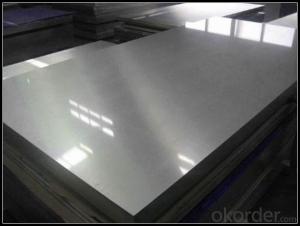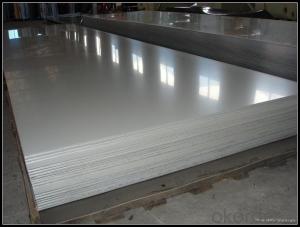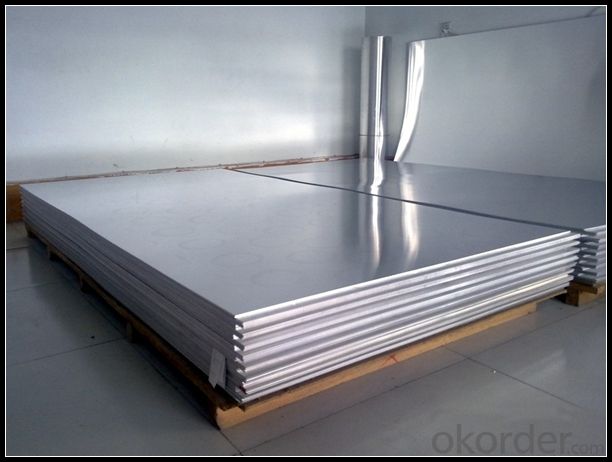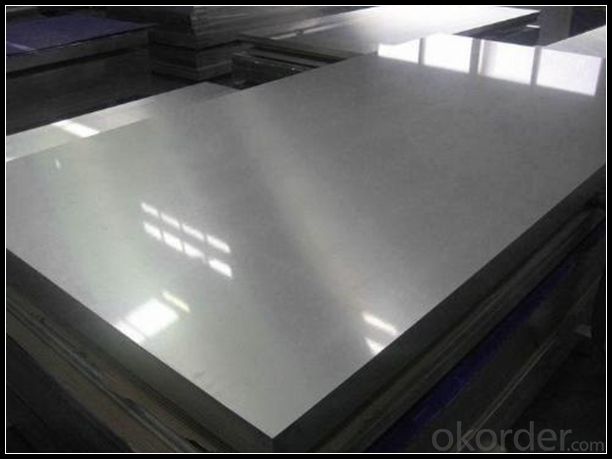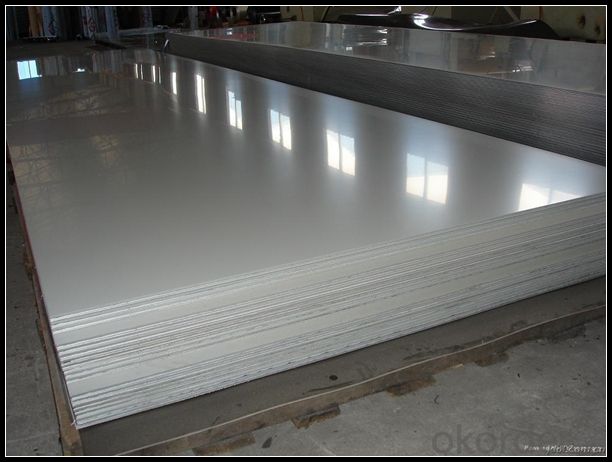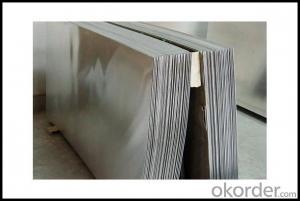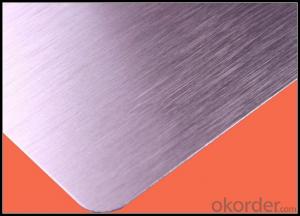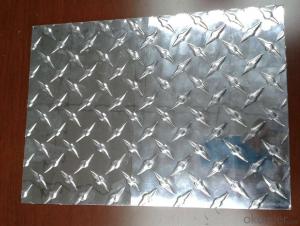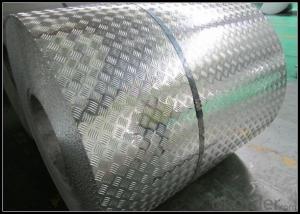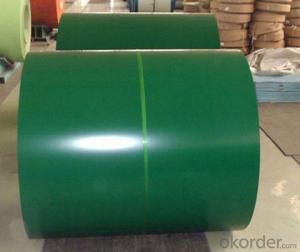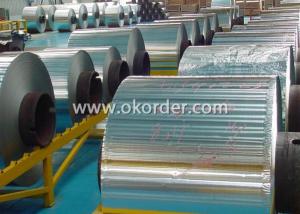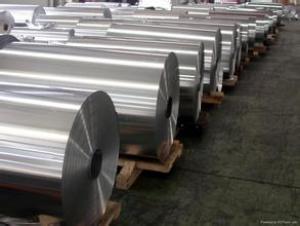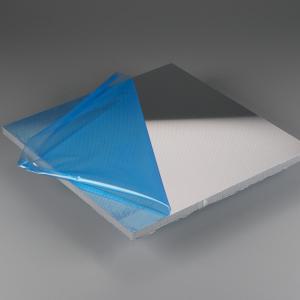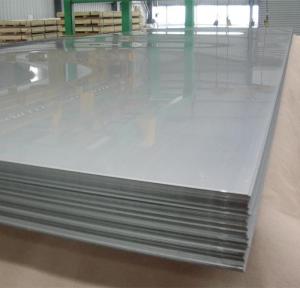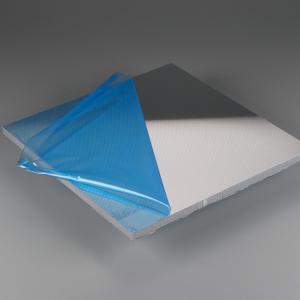Anodized Aluminum Sheets for Sale South Africa - Best Quality in China
- Loading Port:
- Shanghai
- Payment Terms:
- TT OR LC
- Min Order Qty:
- 5 m.t.
- Supply Capability:
- 10000 m.t./month
OKorder Service Pledge
OKorder Financial Service
You Might Also Like
Specification
1. Specification of Anodized Aluminum Sheet
Aluminum Coil/Sheet | |
Main Specification | |
Alloy | AA1xxx (AA1050, AA1060, AA1070, AA1100 etc.) |
AA3xxx (AA3003, AA3004, AA3005, AA3105 etc.) | |
AA5xxx, AA6XXX (AA5052,AA5083, AA5754, AA6061, AA6062 etc.) | |
AA8xxx(AA8011, AA8006 etc.) | |
Temper | H14,H16, H18, H22, H24, H26, H32,O/F, T4, T6, T651 |
Thickmess | 0.01mm-100mm |
Width | 30mm-1700mm |
Standard | GB/T 3880-2006/ASTM |
Special specification is available on customer's requirement | |
2. Application of Anodized Aluminum Sheet
(1).Interior: wall cladding, ceilings, bathrooms, kitchens and balconies, shutters, doors...
(2).Exterior: wall cladding, facades, roofing, canopies, tunnels,column covers , renovations...
(3).Advertisement: display platforms, signboards, fascia, shop fronts...
3. Feature of Anodized Aluminum Sheet
Surfact Quality :
Be free from Oil Stain, Dent, Inclusion, Scratches, Stain, Oxide Dicoloration, Breaks, Corrosion, Roll Marks, Dirt Streaks and other defect which will interfere with use,
Mechenical Property:
Chemical Composite and Mechanical Property
4. Certificate:
SGS and ROHS(if client request, paid by client), MTC(plant provided), Certificate of Origin(FORM A, FORM E, CO), Bureau Veritas and SGS (if client request, paid by client), CIQS certificate
5. Image of Anodized Aluminum Sheet
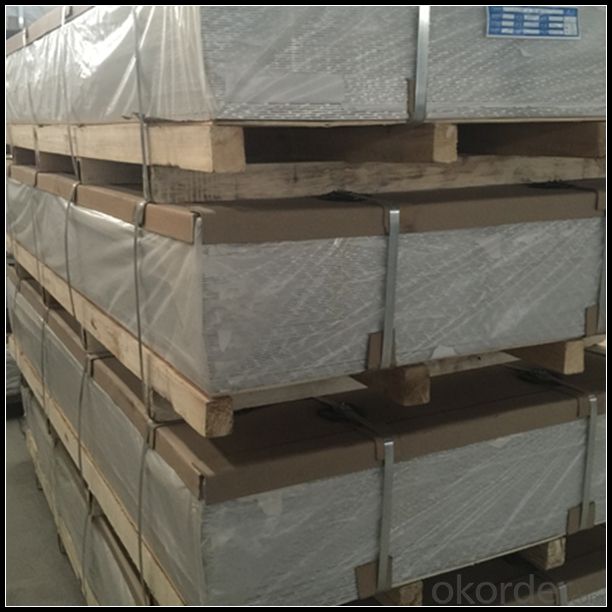
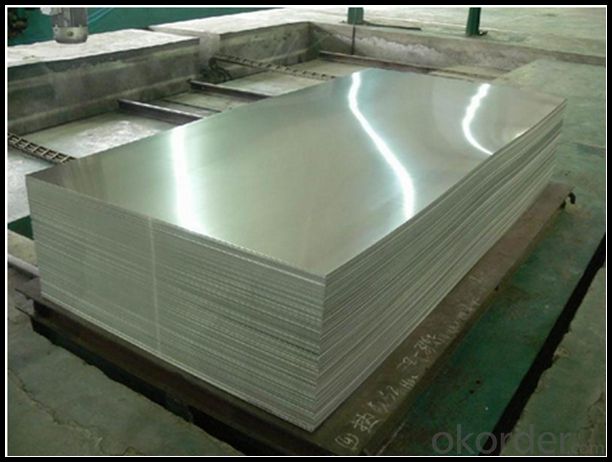

6. Package and shipping of Anodized Aluminum Sheet
First, plastic cloth with drying agent inside; Second, Pearl Wool ; Third, wooden cases with dry agent , fumigation wooden pallets, aluminum surface could cover blue PVC film
7. FAQ
1) What is the delivery time?
Dpends on actual order, around 20 to 35 days
2)What is the QC system:
We have QC staff of 20 persons and advanced equipment, each production is with MTC traced from Aluminum ingot lot.
3) What market do you mainly sell to?
Australia, America, Asia, Middle East, Western Europe, Africa etc
- Q: Can the aluminum sheets be used for manufacturing light reflectors?
- Yes, aluminum sheets can be used for manufacturing light reflectors. Aluminum is highly reflective and has excellent light reflecting properties, making it a popular choice for manufacturing light reflectors in various industries.
- Q: This question asks for a comparison of aluminum sheets with other common materials used in building insulation, focusing on their properties and performance.
- <p>Aluminum sheets are lightweight and have excellent thermal conductivity, which can be both an advantage and a disadvantage in insulation. They reflect heat well, making them useful in radiant barrier applications, but they are poor insulators as they do not trap heat. In contrast, materials like fiberglass, cellulose, and mineral wool have lower thermal conductivity and are more effective at reducing heat transfer. These materials are better at insulating as they trap air, which is a poor conductor of heat. Foam insulation, such as polyurethane and polystyrene, also offers good thermal resistance due to their closed-cell structure. Overall, aluminum sheets are not typically used as primary insulation but can be effective in specific applications where heat reflection is desired.</p>
- Q: Can aluminum sheets be used in marine environments?
- Yes, aluminum sheets can be used in marine environments. Aluminum is a commonly used material in marine applications due to its excellent corrosion resistance properties and lightweight nature. It can withstand the harsh conditions of saltwater, making it suitable for boat building, marine structures, and other marine-related uses.
- Q: What is the minimum bending radius for aluminum sheets?
- Several factors, such as sheet thickness, alloy type, and bending method, determine the minimum bending radius for aluminum sheets. However, as a rule of thumb, the minimum bending radius is usually 1.5 to 2 times the sheet thickness. For instance, if your aluminum sheet is 1mm thick, the minimum bending radius would be approximately 1.5 to 2mm. It's worth mentioning that these values may vary, so it is advisable to consult the manufacturer's or a professional's specific material and bending guidelines for the best outcomes.
- Q: What are the standard tolerances for aluminum sheets?
- The tolerances for aluminum sheets differ based on the specific industry and application. However, there are commonly accepted tolerances for aluminum sheets, such as thickness tolerances, flatness tolerances, and width and length tolerances. Thickness tolerances pertain to the allowable variation in the thickness of an aluminum sheet. The range of these tolerances depends on the grade and thickness of the sheet, and can be from +/- 0.005 inches to +/- 0.010 inches. Flatness tolerances specify the acceptable degree of flatness or deviation from a perfectly flat surface for an aluminum sheet. The range of flatness tolerances varies according to the application's specific requirements, and can be from a few thousandths of an inch to a few hundredths of an inch. Width and length tolerances define the allowable variation in the dimensions of an aluminum sheet. These tolerances can be expressed as +/- inches or as a percentage of the sheet's width or length. Generally, width and length tolerances for aluminum sheets fall within the range of +/- 0.25 to +/- 0.50 inches. It is important to note that these standard tolerances are subject to change and may differ depending on the specific industry, customer requirements, and the manufacturer's capabilities. Therefore, it is advisable to consult the manufacturer or industry-specific standards to determine the exact tolerances for aluminum sheets in a particular application.
- Q: How are aluminum sheets cleaned and maintained?
- Aluminum sheets can be cleaned and maintained by following a few simple steps. Firstly, they should be wiped down regularly with a soft cloth or sponge and mild detergent to remove any dirt or grime. Avoid using abrasive materials or cleaners that contain bleach or ammonia, as they can damage the surface. After cleaning, it is recommended to rinse the sheets thoroughly with clean water and dry them with a soft cloth to prevent water spots. To maintain their shine, applying a coat of aluminum polish or a mixture of vinegar and water can help remove any oxidation or dullness. Additionally, it is important to protect aluminum sheets from harsh elements by storing them in a dry and clean environment and avoiding contact with corrosive substances.
- Q: Would a chemical reaction happen between a piece of copper and a liquid solution containing a compound of aluminum? Why or why not? FIRST BEST ANSWER GETS POINTS!
- Please don't ask diffuse questions. If you mean a solution of aluminum ions Al+3, then no: Al3+ + 3e? ? Al(s) -1.66 Cu2+ + 2e? ? Cu(s) +0.340 Cu+ + e? ? Cu(s) +0.520 If you mean a solution of some unspecified Al compound then maybe, but there's no way to know until you specify the compound.
- Q: What is the usage of aluminum sulfate for every ton of paper produce for kraft paper and news print
- Aluminium sulphate was the most extensively used chemical raw material in the papermaking industry. Its primary use was in the rosin sizing of paper where the rosin soap was reacted with aluminium sulphate to impart hydrophobis characteristics to the paper. The alum had a side benefit in fixing all types of anionic substances into the paper web. All types of paper, even those that were not sized, such as newsprint,were made using alum. This resulted in the paper being made under acidic conditions. The technology has changed markedly over the last 10 to 20 years with synthetic sizing agents being developed which do not require reaction with alum. In my country there is not 1kg of fine writing and printing paper made with rosin/ alum sizing, and no alum is used at all. Various synthetic highly charged cationic resins have been developed, such as polyacrylamide resins, polyethyleneimine resins, etc, whic are used as fixing and retention agents, so that alum has been virtually eliminated. To sum up the importance of aluminium sulphate as a papermaking chemical is now very limited.
- Q: Are aluminum sheets suitable for architectural louvers?
- Yes, aluminum sheets are suitable for architectural louvers. Aluminum is a popular material choice for louvers due to its various advantageous properties. Firstly, aluminum is lightweight yet strong, making it an ideal material for architectural louvers. It can withstand external forces such as wind and weather conditions without compromising its structural integrity. This is crucial for louvers, as they need to provide ventilation and airflow while also maintaining their shape and functionality. Secondly, aluminum is highly resistant to corrosion and rust. Louvers are often exposed to outdoor elements, including rain, moisture, and sunlight. Aluminum's resistance to corrosion ensures that the louvers will remain durable and long-lasting, even in harsh environmental conditions. Additionally, aluminum is a versatile material that can be easily customized and fabricated into various shapes and sizes. This allows architects and designers to create louvers with unique designs and configurations to suit specific building requirements. Aluminum louvers can be tailored to provide optimal airflow, light control, and aesthetic appeal. Moreover, aluminum is a sustainable and environmentally friendly material. It is widely recyclable, meaning that aluminum louvers can be easily repurposed or reused at the end of their life cycle. Choosing aluminum for architectural louvers aligns with sustainable building practices and contributes to reducing the overall environmental impact. In conclusion, aluminum sheets are indeed suitable for architectural louvers. Their lightweight, strong, corrosion-resistant, and customizable properties make them an excellent choice for louvers in terms of functionality, durability, and aesthetics.
- Q: This question asks for various methods through which aluminum sheets can be recycled and repurposed.
- <p>Aluminum sheets can be recycled and reused in several ways: 1. Melting and Reformation: The most common method is to melt down the aluminum and reform it into new products. 2. Mechanical Recycling: This involves shredding and compacting the aluminum sheets to be used as raw material in new products. 3. Energy Recovery: The heat generated from burning aluminum can be used to produce energy. 4. Alloying: Aluminum can be combined with other metals to create new alloys with different properties. 5. Reuse in Construction: Aluminum sheets can be reused in construction projects, such as facades or roofing. 6. Manufacturing: They can be used in manufacturing processes to create new aluminum products like cans, foils, and automotive parts. Proper recycling of aluminum reduces environmental impact and conserves resources.</p>
Send your message to us
Anodized Aluminum Sheets for Sale South Africa - Best Quality in China
- Loading Port:
- Shanghai
- Payment Terms:
- TT OR LC
- Min Order Qty:
- 5 m.t.
- Supply Capability:
- 10000 m.t./month
OKorder Service Pledge
OKorder Financial Service
Similar products
Hot products
Hot Searches
Related keywords

